Halloween may be near but the brooms in today’s post are not your run-of-the-mill witch’s stick! These are handcrafted artisan brooms—one-of-a-kind, functional pieces of art made with time-honored traditional methods using all natural materials.
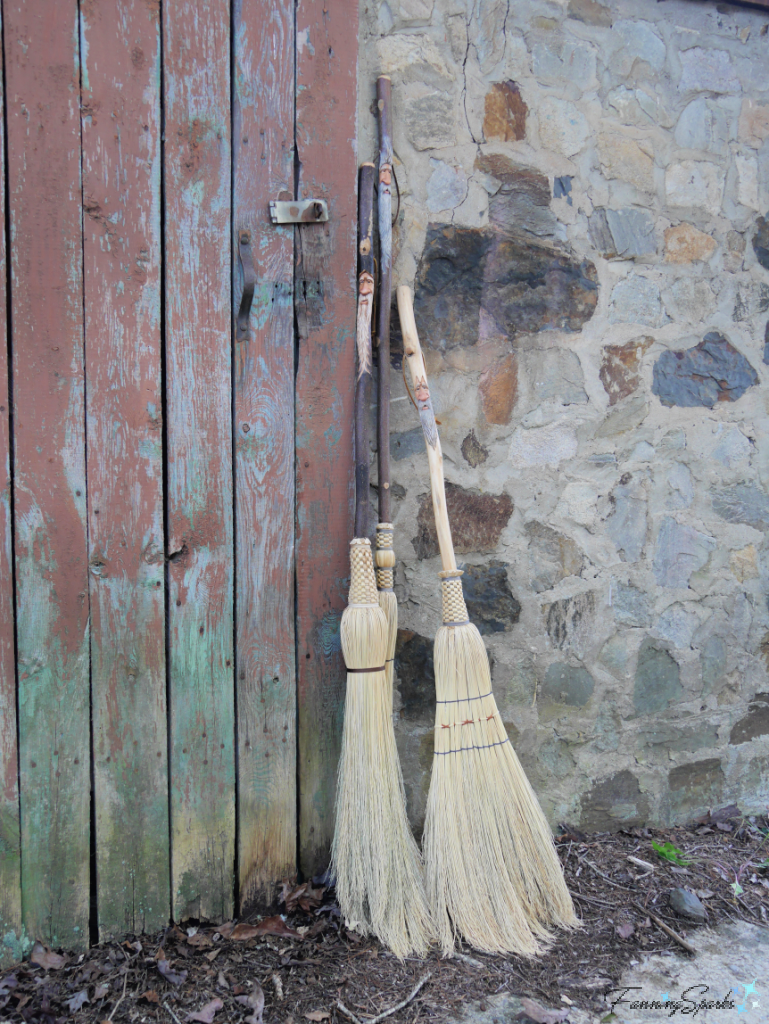
These brooms have hand-carved wooden handles with charismatic wood spirits peeking out from the bark and wood grain. These three captivating fellows were crafted by talented caricature woodcarver and instructor Marvin Daniels.
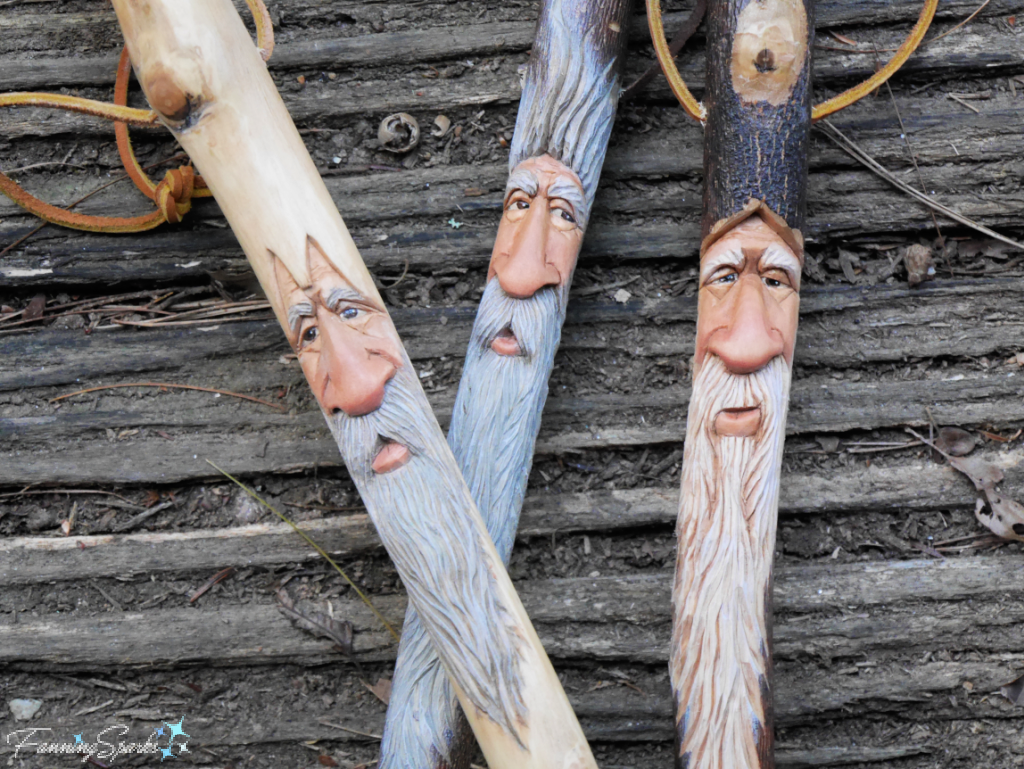 These brooms have hand-plaited natural sorghum (Sorghum vulgare) sweeps. This is the outstanding work of Mark Hendry, a full time artisan and instructor specializing in Brooms & Basketry.
These brooms have hand-plaited natural sorghum (Sorghum vulgare) sweeps. This is the outstanding work of Mark Hendry, a full time artisan and instructor specializing in Brooms & Basketry.

Last week, a small group of eager students gathered in the Rock Room at John C Campbell Folk School with the objective of learning to make these extraordinary brooms. The class, entitled Wizard Brooms, was led by Mark Hendry and Marvin Daniels. This dynamic duo made the challenging task of carving on round wooden sticks and tying broomcorn to those sticks an entertaining and enjoyable experience. I think it’s fair to say we all surprised ourselves!
Before I dive into the details of how we did it, it’s worth taking a minute to consider the everyday cleaning tool we call a broom. Brooms are believed to date back to ancient times when they were merely a bundle of twigs tied together and used to sweep up ash and embers around fires. The first significant milestone in its evolution occurred in 1797 when Levi Dickenson, a farmer in Massachusetts USA, made a broom using the tassels of sorghum. His broom was a noteworthy improvement over previous versions and Dickenson went on to refine his brooms and broom making techniques.
Interestingly, the twigs or straw used on early brooms had a tendency to come off especially when someone shook a broom in anger. This situation is believed to have led to the saying “flying off the handle”. Early brooms, called besoms, were round like the cobweb besom broom shown below.

Brooms did not incorporate woven collars (like the one shown above) until the early 19th century when the Shakers invented the flat broom. This is a Shaker style Sweeper.
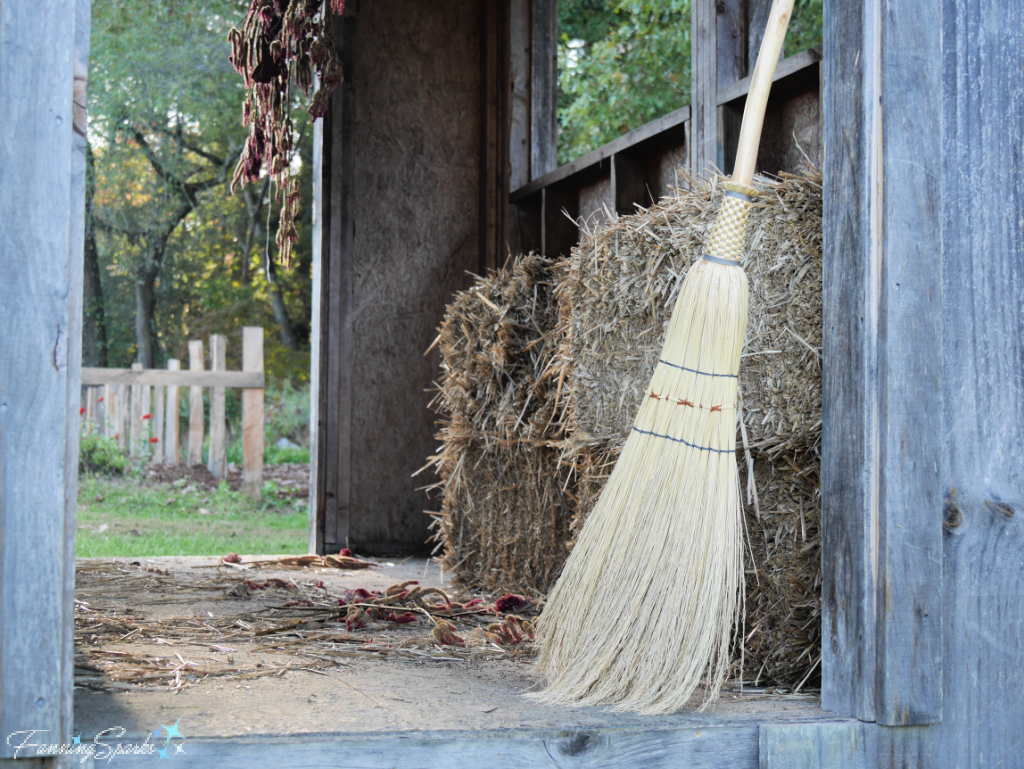
My fellow students and I made two brooms in the Wizard Brooms class: an Appalachian cobweb besom broom and a Shaker style flat hearth sweeper. Here’s how my brooms turned out.
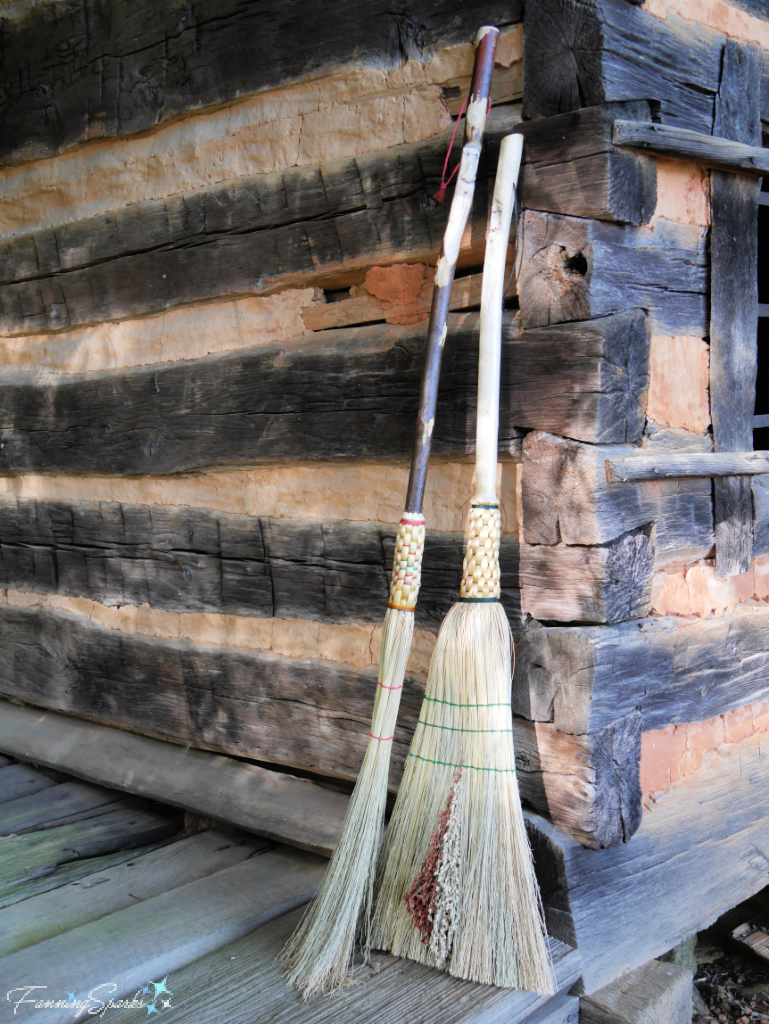
We used a combination of woodcarving and broom making techniques. We started with simple wooden branches like the one shown leaning against the tree. This one was tulip poplar about 32” long and 1” in diameter.

Marvin led us through the steps to carve wood spirit faces on our broom handles. We started by blocking in the main elements of the face including the eye channel and nose. I used one of Marvin’s samples to guide my carving.
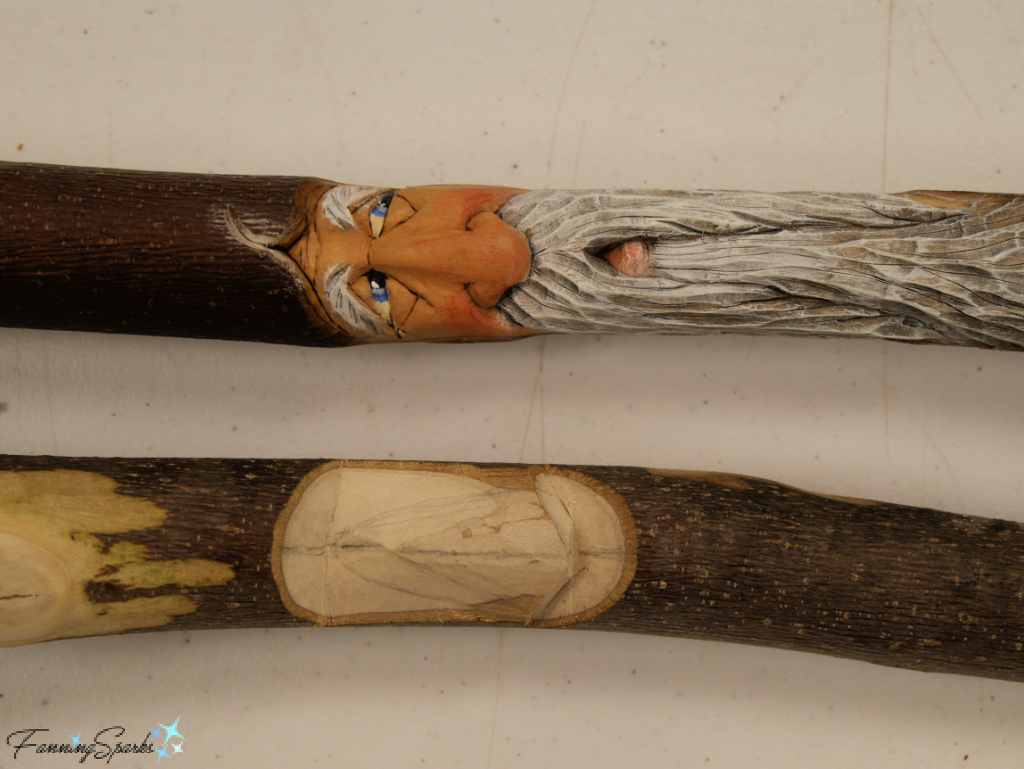
Over the course of the day, we refined these facial elements and started to add some details. Here’s how my carving evolved.
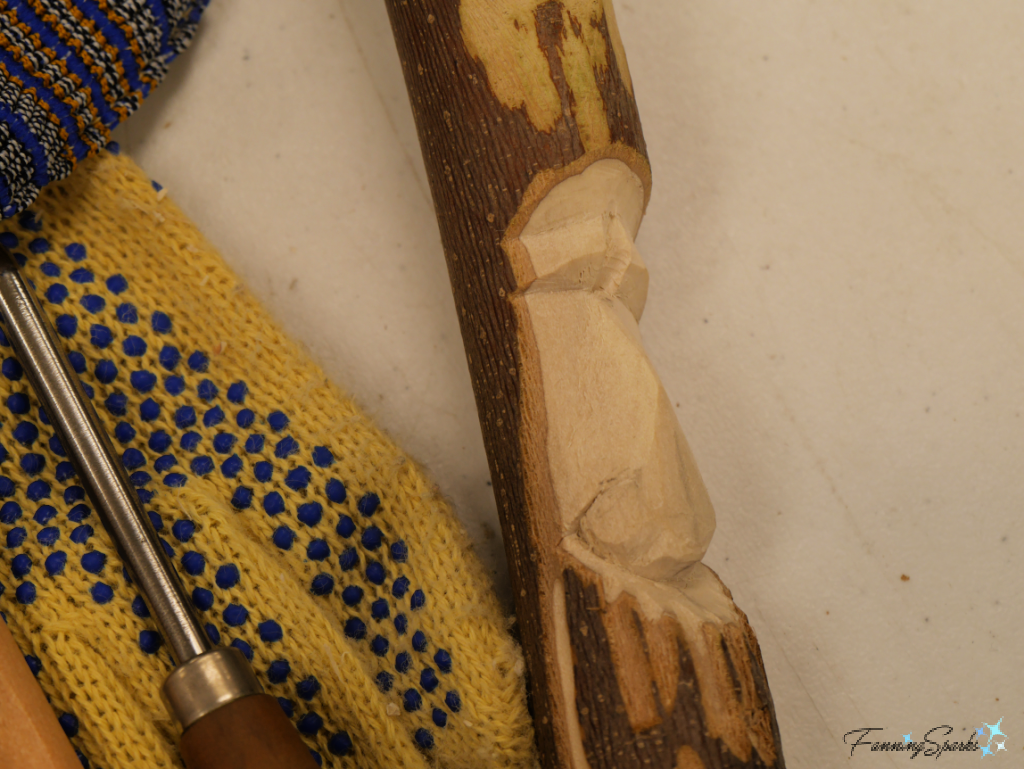
Marvin patiently guided us through the more difficult aspects, especially the eyes, and jumped in to help when we got stuck.
 Marvin finishes his wood spirit faces by lightly accenting the features with wood burning lines and then subtly painting with acrylics. This is Marvin’s steady hand with the wood burning tool.
Marvin finishes his wood spirit faces by lightly accenting the features with wood burning lines and then subtly painting with acrylics. This is Marvin’s steady hand with the wood burning tool.
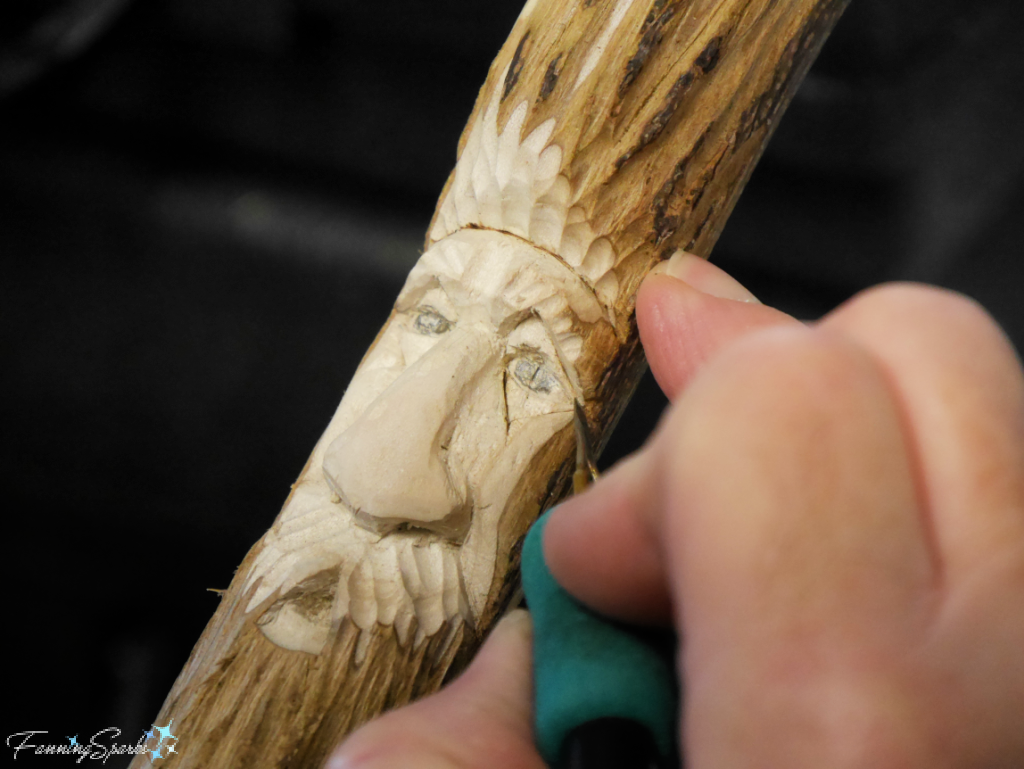
Here’s a closer look at one of Marvin’s splendid, hand carved wood spirits.
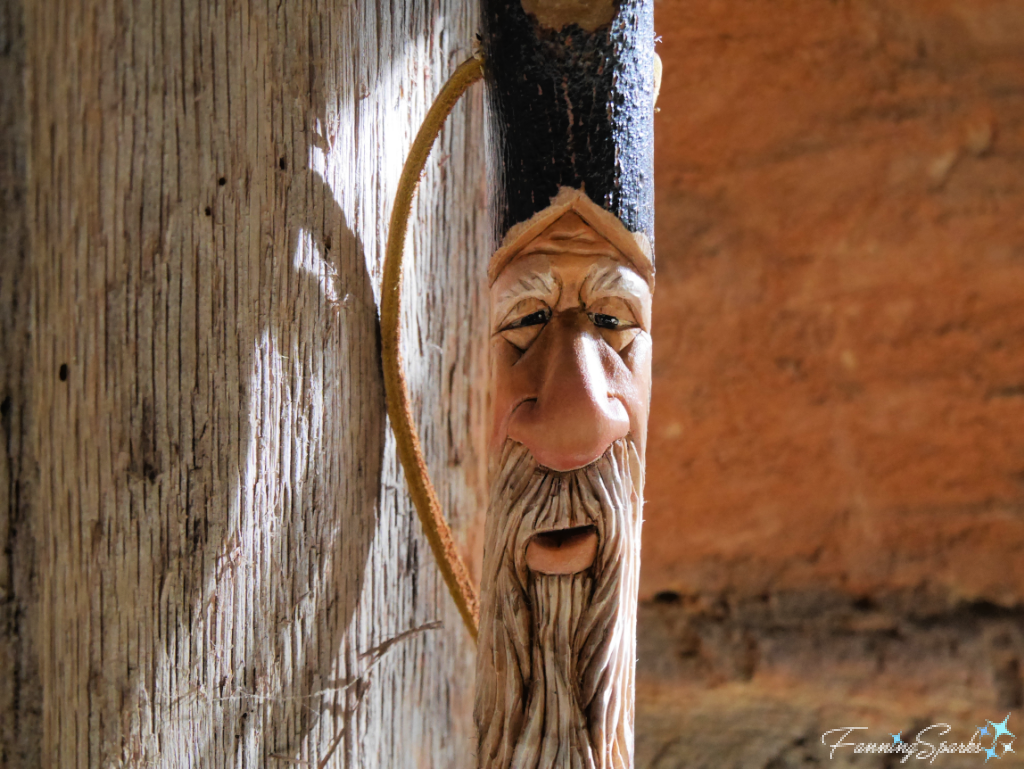
Although I had the option to enhance my carvings with wood burning and painting, I opted to paint only the eyes and leave the rest of my carvings unadorned. They’re not perfect but I’m really pleased with the results.

After 2 days of carving handles, we shifted our focus to making the brooms. Mark taught us about the tools and materials used in traditional broom making including the critical component—broomcorn (Sorghum vulgare). Broomcorn differs from other sorghums because the heads have long fibrous seed branches (up to 36”).
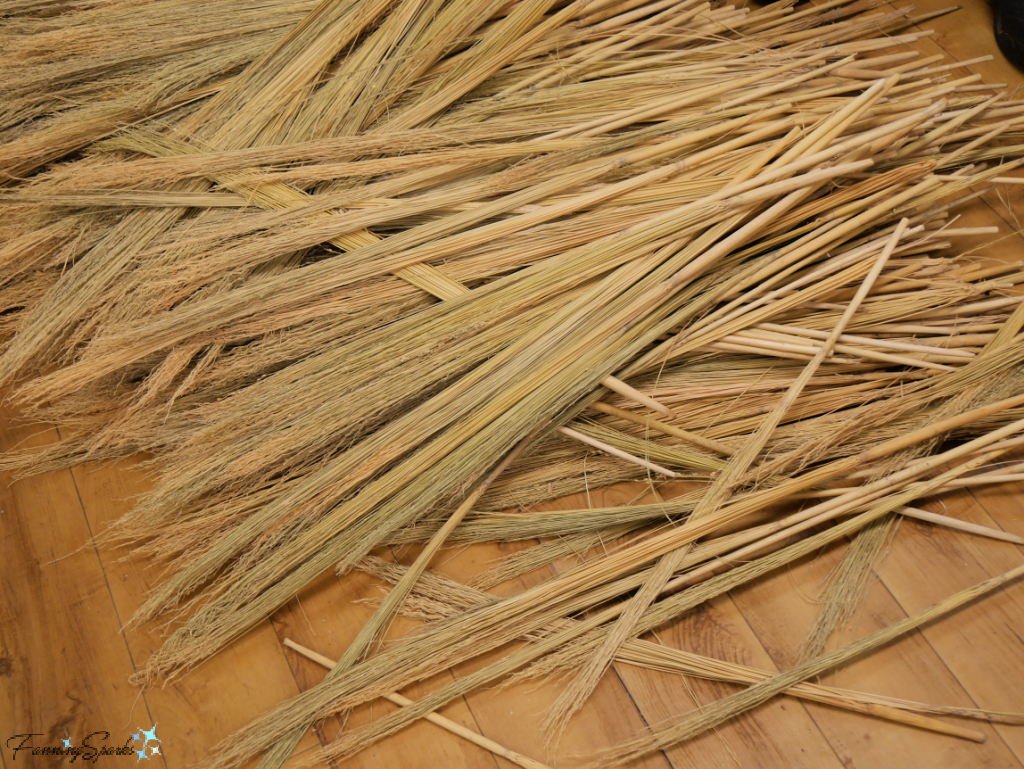
We learned to sort broomcorn by size and quality. Then it was time to try our hand at plaiting. We quickly learned the importance of keeping a firm, consistent tension on the twisted nylon twine. This was my practice piece.
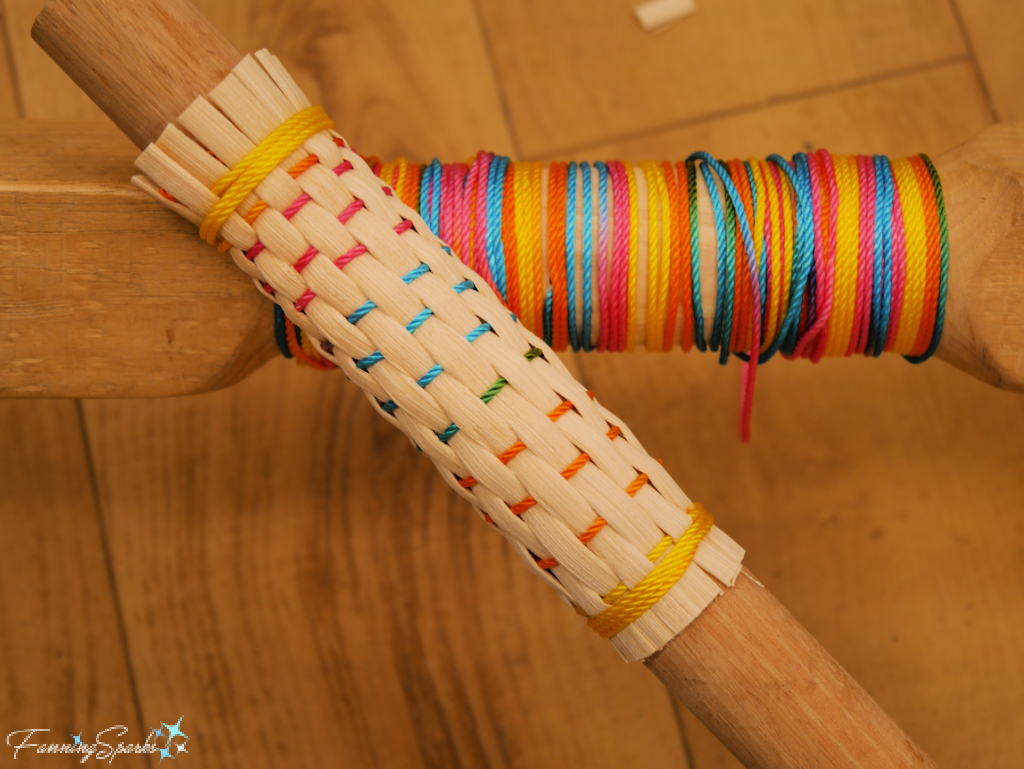
Our broomcorn was soaked in water and mellowed for a couple of hours. Then we were ready to begin our cobweb besom brooms. Mark carefully demonstrated each of the steps before we completed them. Generally speaking, we placed the broomcorn stalks around the broom handle and tied them in place with twisted nylon twine. It is a whole lot more difficult than it sounds!
We worked in a seated position with the broom handle and broomcorn in our laps while keeping our feet on the foot treadle that held the twine. Then we pulled twine from the foot treadle to wrap it around the broom handle and broomcorn. The trick was keeping the all-important tension tight and consistent throughout the entire process—from the minute we started our first wrap until we finished all the plaiting and the final wrap. Mark demonstrates below.
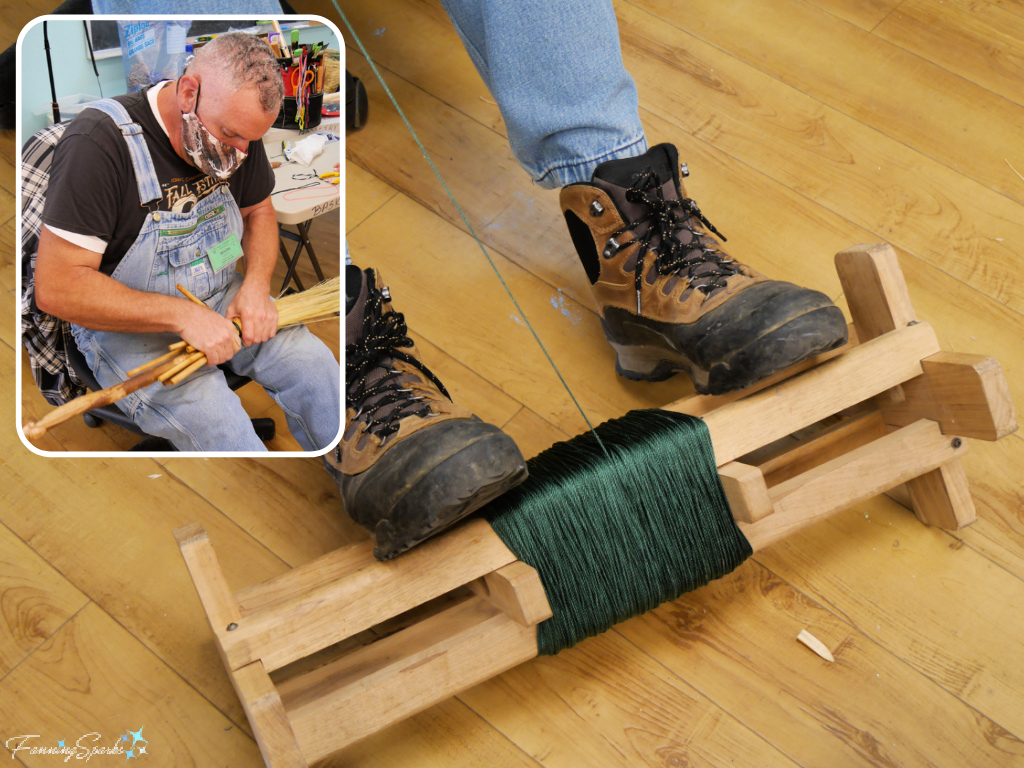
Here’s a closer look at Mark plaiting a hearth sweeper.

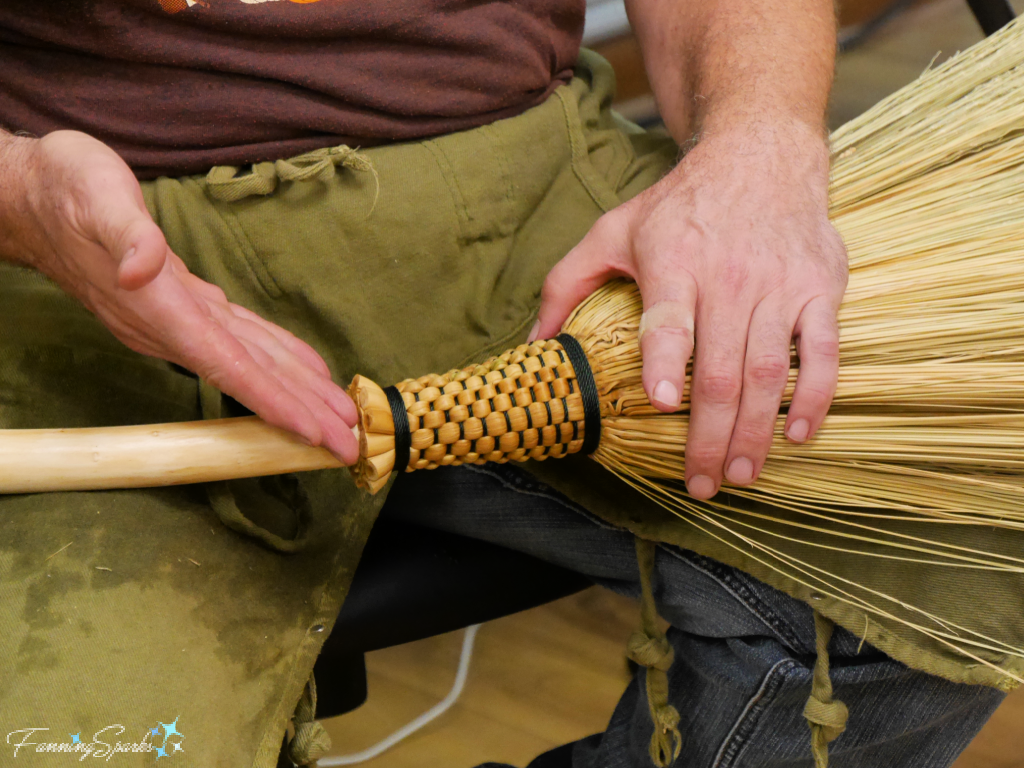
After trimming the broomcorn stalks, our brooms were put in a drying closet overnight. The next day, we used waxed cordage to stitch around the broomcorn fibers. This photo highlights the gorgeous stitching on one of Mark’s flat brooms.
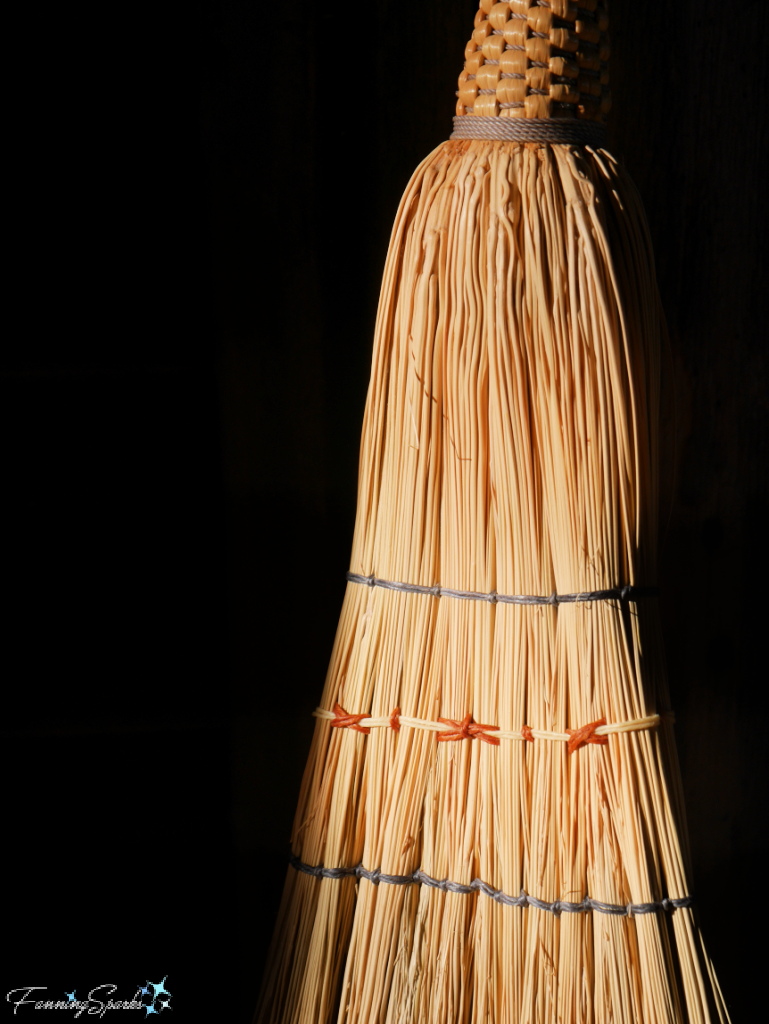
This was the setup to begin stitching my flat broom. The flat metal needle, a repurposed butter knife, is ideal for sliding through the broomcorn fibers. The wooden clamp will be carefully straightened to hold the straw flat and in place.
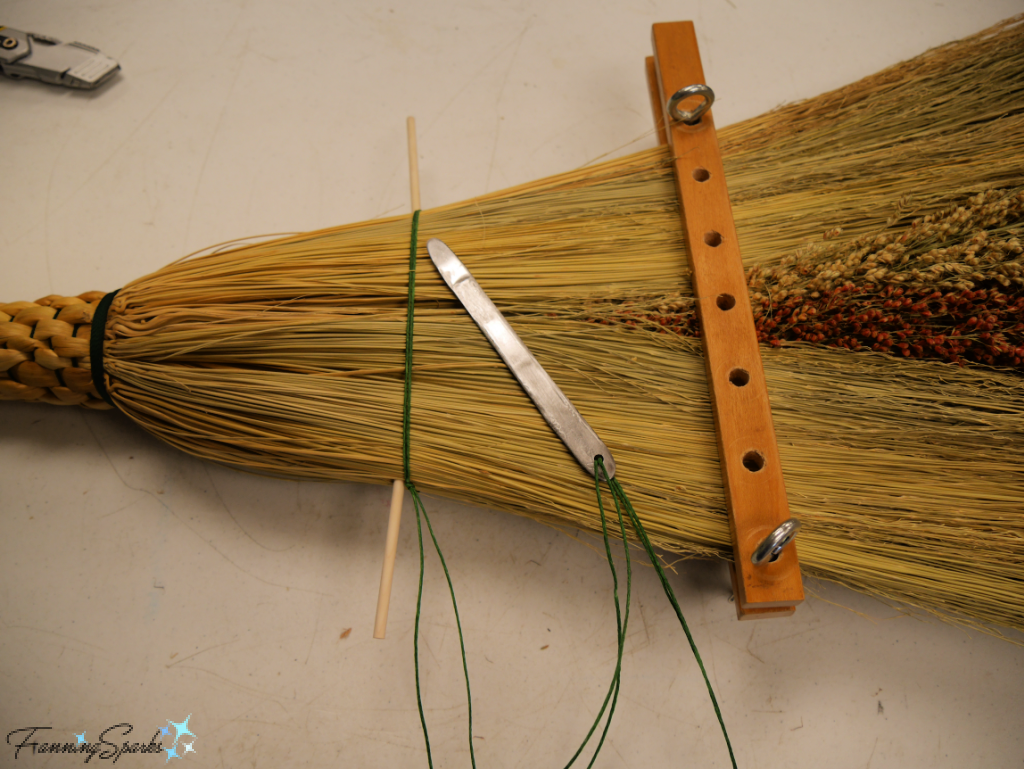
We were able to add a special touch to our flat brooms by inserting a few stalks of red broomcorn (Sorghum bicolor) which was harvested from the Folk School gardens.
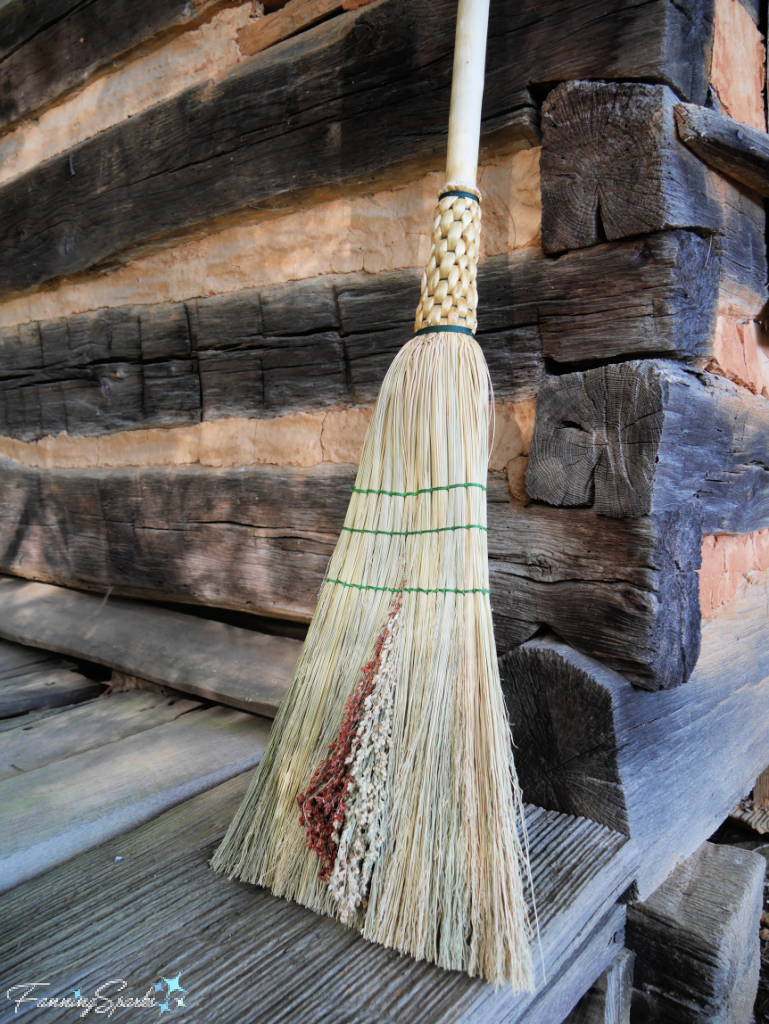
There were several steps to finish the brooms including beveling the top edge of the broomcorn stalks, making hangers, lacquering the handle and plaited stalks, and trimming the bottom.
Special thanks to Mark and Marvin for a great experience making brooms with hand carved handles. Thanks as well to my fellow classmates for an enjoyable week of learning and laughing!
Here’s one more shot of my beautiful traditional, handcrafted brooms.
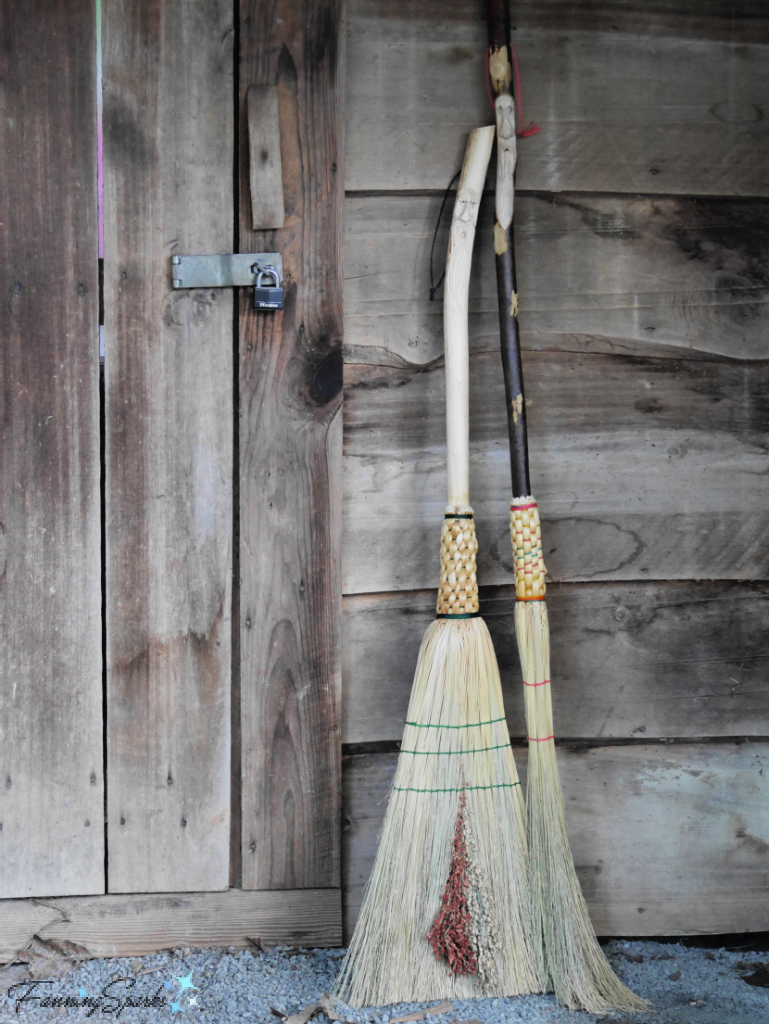
Please Note: Although my photos show the brooms standing on their stalks, broomcorn brooms should be hung for storage.
More Info
The John C Campbell Folk School mission is “The Folk School transforms lives, bringing people together in a nurturing environment for experiences in learning and community life that spark self-discovery.” The Folk School offers over 800 classes in 50 subject areas annually. See the John C Campbell Folk School website for more info.
I’ve had the pleasure of attending several Folk School classes including:
. Weave a Market Basket
. From Sheep to Shawl
. Flat-Plane Carving with Harley
. Center, Open, Pull
I’m currently participating in a 6-week Work Study Program. Look for Work Study on the Folk School website for more info or check the FanningSparks’ blog posts about my prior Work Study Program experience.
Mark Hendry and Marvin Daniels frequently instruct at the Folk School. They are both talented professionals with a gift for sharing their knowledge and expertise. You can learn more about Mark’s broom making and basketry on his website Mark Hendry Mountain Heritage. See Marvin’s website and Etsy shop for more info about Marvin’s woodcarving.
Check out Purdue University’s New Crops Resource Online Program to learn more about broomcorn as an alternative field crop.
Today’s Takeaways
1. Traditional broom making incorporates natural materials which are long-lasting, sustainable and renewable.
2. Using time-honored traditional methods can help us appreciate the independence of our ancestors.
3. Consider replacing run-of-the-mill household items with functional artwork.


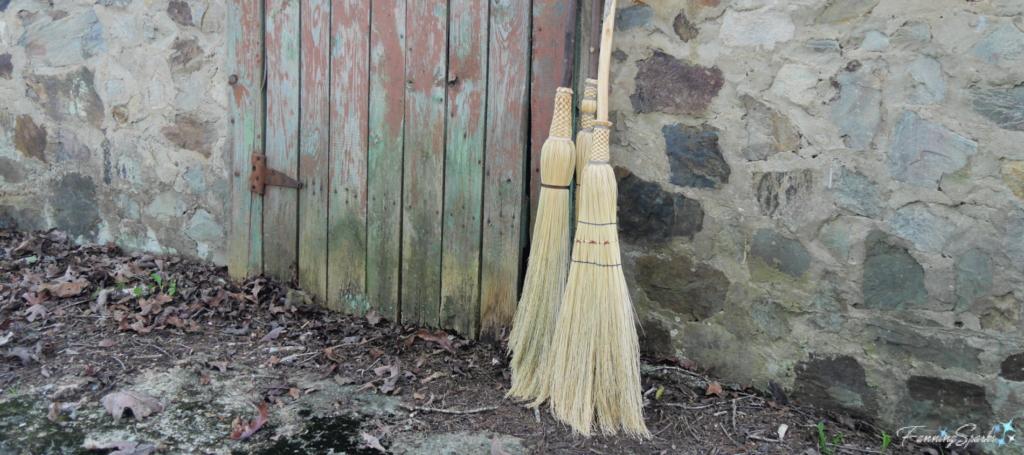


Comments are closed.